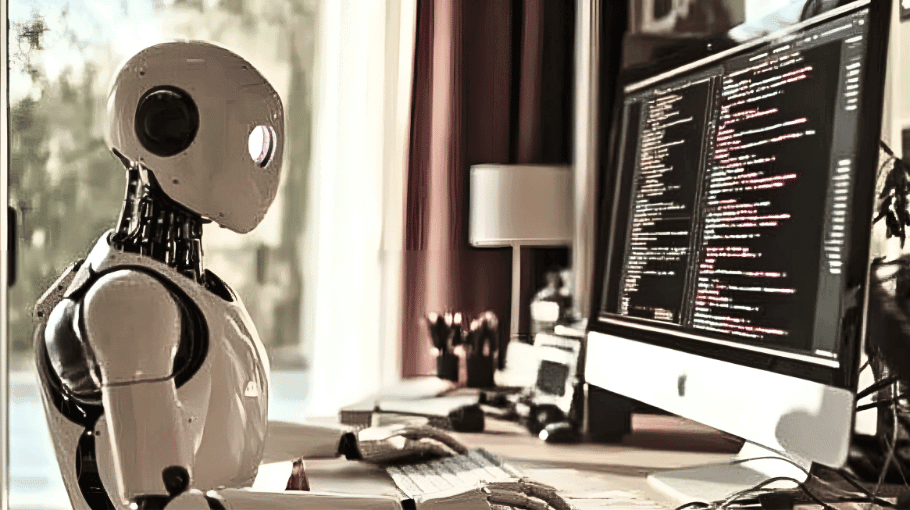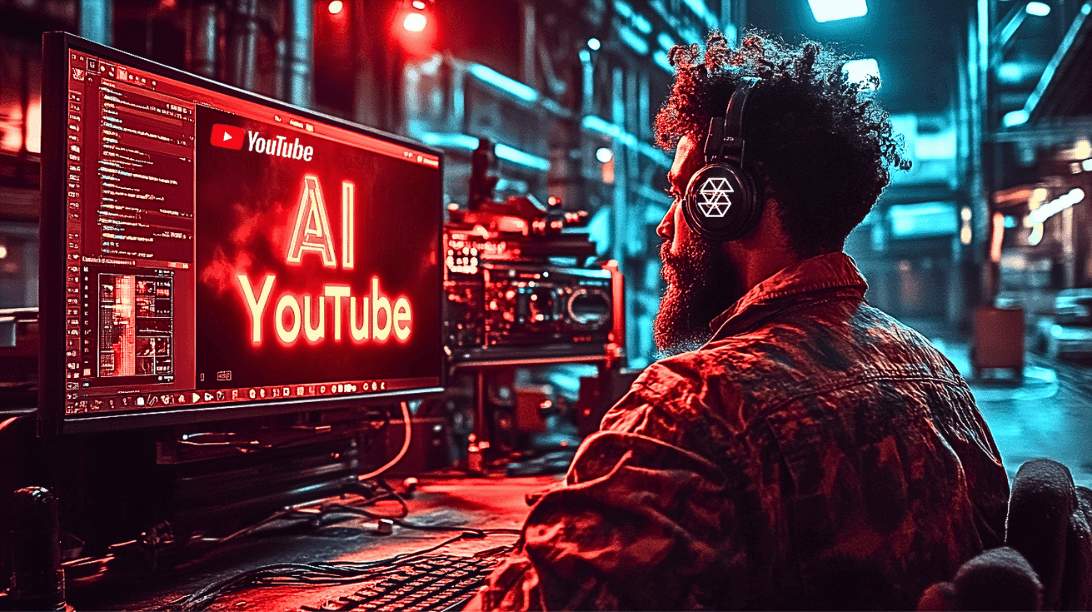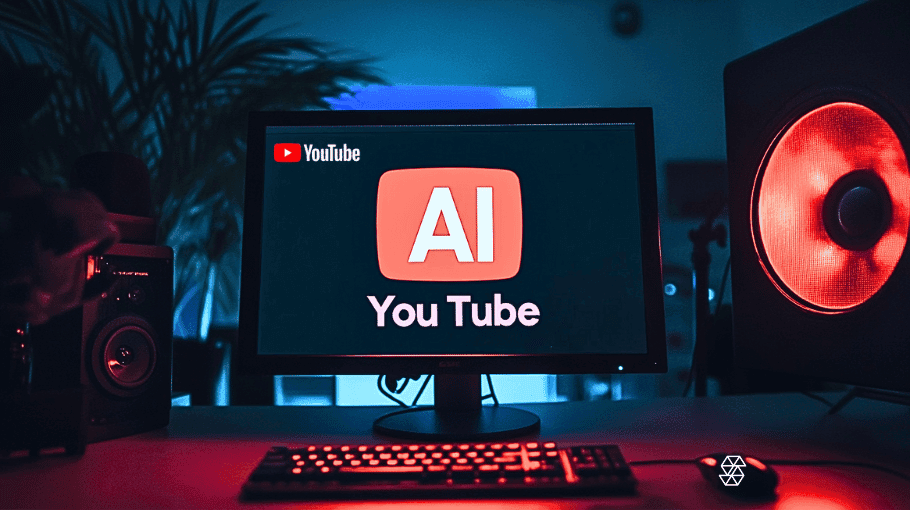Top 5 AI Image Generators and Their Industry Applications
The digital landscape is evolving at an unprecedented pace, and at the forefront of this transformation are AI image generators. As they redefine content creation and design processes, these advanced tools are becoming increasingly important in a variety of industries. By leveraging powerful technologies like deep learning, artificial intelligence, neural networks, and computer vision, these generative models have revolutionized image manipulation and content creation.
These cutting-edge image generators often utilize a GAN network to turn simple descriptions into vivid and complex images, offering a glimpse into the future of creative design. With the promise to reshape image generation techniques, these tools are not just transforming the digital art space, they are also creating a whole new realm of possibilities for algorithmic art and creative AI.
In this article, we will delve into the top 5 AI image generators, exploring their unique features and applications. We will also discuss how they work, their impact on various industries, and what the future might hold for this technology.
Understanding AI Image Generators
AI image generators are a product of the advancements in artificial intelligence, deep learning models, and computer vision, which provide the underlying foundation for these revolutionary tools. They work by using machine learning algorithms to understand patterns in the training dataset, which help the AI learn, and then create new, unique images that follow these learned patterns.
Deep learning, a subset of artificial intelligence, mimics the neural networks in the brains of humans. Deep learning algorithms use these neural networks to learn from vast amounts of data, and over time, these networks learn to generate images that are increasingly complex and realistic.
Computer vision is a field of artificial intelligence that teaches computers to interpret and understand visual information from the surrounding world. By combining deep learning and computer vision, the AI can understand visual content at a granular level and generate high-quality images that are nearly indistinguishable from those created by humans.
Understanding Generative Adversarial Networks (GANs)
A crucial part of the technology behind these image generators are Generative Adversarial Networks, or GAN Models. GANs are a class of machine learning frameworks designed by Ian Goodfellow and his colleagues in 2014.

Generative models work using a system of two neural networks contesting with each other in a zero-sum game framework. One network, called the generator, creates new data instances while the other, the discriminator network, evaluates them for authenticity.
In image generation, the generator network would create new images, and the discriminative model would determine whether the images are real (from the dataset) or fake (created by the generative model). Through this process of continuous learning and adjustment, the generative adversarial network can generate incredibly realistic images.
Top 5 AI Image Generators
It’s clear that these tools are not just a passing trend, but a significant development in the fields of artificial intelligence, machine learning, and deep learning. They are transforming the way humans create and interact with visual content, opening up a world of possibilities for content creators, designers, and businesses alike. You can use any of these top 5 to generate your own images. Within seconds, you can have not just a single image, but multiple.

Midjourney
Midjourney is an AI image generator that stands out for its ability to create high-quality images from text descriptions. It uses a neural network trained on a vast amount of training data to understand the context of the input data and generate an image that accurately represents it. This AI image generator is particularly useful for content creators, designers, and artists who want to quickly generate visual content.
Midjourney made headlines in March 2023 when it shut off access to its free trial version, a move that sparked discussions about the implications of AI technology and its potential misuse. Despite this, the platform continues to be a popular choice to generate photos, with users praising its ability to create stunning visuals from text descriptions. It is by far the best AI image generator available right now.
Highlights of Midjourney:
- Creates high-quality images from text descriptions.
Uses a neural network trained on a vast amount of training data.
Ideal for content creators, designers, and artists who want to quickly generate visual content.
DALL-E 2
DALL-E 2 is an advanced AI image generator developed by OpenAI. It’s a successor to the original DALL-E, which was known for its ability to generate unique, creative images from text prompts. DALL-E 2 takes this a step further by improving the quality of the generated images and offering more control over the generation process. It’s a powerful tool for content creation and image manipulation.
DALL-E 2 is now available to all users without a waiting list, a development that has been hailed as a significant milestone in the field of AI and deep learning. The platform uses contrastive learning, a technique that involves learning low-dimension representation of a particular entity by contrasting between similar and dissimilar entities. This allows DALL-E 2 to generate completely fresh images that combine distinct and unrelated objects in semantically plausible ways.
Highlights of DALL-E 2:
- An advanced AI image generator developed by OpenAI.
Generates unique, creative images from text prompts.
Offers users more control over the generation process.
DreamStudio (Stable Diffusion)
DreamStudio, developed by Stability AI, is a generative AI text-to-image web app that creates realistic images, art, and animation from a description in natural language. It’s powered by Stable Diffusion, a state-of-the-art open-source image generating AI. DreamStudio is the official team interface and API for Stable Diffusion, making it a reliable and efficient tool for AI image generation.
Stable Diffusion is a free, open-source neural network for generating photorealistic and artistic images based on text-to-image and image-to-image transformations. It was launched by Stability AI, a company known for its innovative AI solutions. The AI image generator uses deep learning and computer vision techniques to interpret the text prompts and generate corresponding images.
DreamStudio provides a user-friendly interface for Stable Diffusion, allowing users to easily input their text prompts and create images. The platform also offers a variety of customization options, enabling users to control the style, color, and other aspects of the generated images. This makes DreamStudio a versatile tool for content creation, image manipulation, and algorithmic art.
Highlights of DreamStudio (Stable Diffusion):
- A generative AI text-to-image web app that creates realistic images, art, and animation from a description in natural language.
Powered by Stable Diffusion, a state-of-the-art open-source image generating AI.
The official team interface and API for Stable Diffusion.
Provides a user-friendly interface and a variety of customization options.
Ideal for content creation, image manipulation, and algorithmic art.
Dream by WOMBO
Dream by WOMBO is an AI art generator that transforms words into beautiful digital artworks. It offers a variety of art styles to choose from, allowing users to create unique, personalized images. The AI uses a text prompt to generate an image, making it a user-friendly tool for those who want to create AI-powered paintings.
Dream is developed by WOMBO, a company that specializes in AI-powered creative tools. The AI image generator uses deep learning algorithms to interpret the text prompts and create images in the chosen art style. This allows users to create stunning and unique digital artworks with just a few clicks.
The platform also offers a variety of art styles, ranging from realistic to abstract. This allows users to create artworks that match their personal taste and style. Whether you’re a professional artist looking for a new tool to experiment with, or a hobbyist looking to create unique digital art, Dream by WOMBO is a great choice.
Highlights of Dream by WOMBO:
- An AI art generator that transforms words into beautiful digital artworks.
Offers a variety of art styles to choose from.
Uses deep learning algorithms to interpret text prompts and create images.
User-friendly tool for creating AI-powered paintings.
Bing Image Creator
Bing Image Creator is Microsoft’s AI image generator powered by an advanced version of the popular DALL-E by OpenAI. It creates images from simple text descriptions, offering a user-friendly interface for generating AI images. Bing Image Creator is a free online tool that creates still pictures from a simple text description, making it a great tool for generating unique images.
Bing Image Creator was launched by Microsoft as part of its Bing search engine. The AI image generator uses an advanced version of DALL-E to create images from text descriptions. This allows users to create unique images by simply typing in a description.
The platform also offers a variety of customization options, allowing users to control the style, color, and other aspects of the generated images. This makes Bing Image Creator a versatile tool for content creation, image manipulation, and algorithmic art.
Highlights of Bing Image Creator:
- Microsoft’s AI image generator powered by an advanced version of the popular DALL-E by OpenAI.
Creates images from simple text descriptions.
Offers a variety of customization options.
A free online tool that creates still pictures from a simple text description.
Ideal for content creation, image manipulation, and algorithmic art.
Industry Applications of AI Image Generators
Film and Entertainment
Artificial intelligence is increasingly finding its way into the film and entertainment industry. AI image generators offer tools for automating and enhancing various aspects of the creative process.
One of the most significant applications of AI image generators in this sector is in pre-visualization. This process involves creating rough sketches or models of scenes before filming begins. Using AI image generators, creators can produce photorealistic scenes from simple descriptions, allowing for faster, more flexible pre-visualization.

Furthermore, this technology can also be used in post-production, specifically in special effects. By inputting a description, a team can generate detailed images that can be used as backgrounds, stand-ins for CGI characters, and more. In addition, AI image generators could potentially be used for character design, creating lifelike models of characters based on written descriptions. This can enhance the creative process by providing a visual starting point for artists and designers.
Advertising

The advertising industry is constantly on the lookout for innovative tools to capture consumer attention, and AI image generators offer a fresh approach to content creation. These generators can create a wide variety of images that could be used in digital marketing campaigns.
For example, they can help in producing visually stunning and unique ad creatives based on the brief or product descriptions. This can be particularly useful in display advertising, where striking visuals can significantly increase click-through rates. AI can generate multiple variations of ad images, allowing marketers to perform A/B testing to find the most effective visuals.
Moreover, AI image generators can help in personalization. Advertisers can use them to generate custom images tailored to the preferences of different consumer segments. Such personalization can increase engagement rates and ultimately boost conversion rates.
UX/UI Design

In the field of UX/UI design, AI image generators are starting to play a transformative role. These tools offer a quick and efficient way to generate visual elements for prototypes, thereby speeding up the design process.
AI image generators can create a wide array of graphical elements based on simple descriptions. For instance, a designer might input a description such as “a modern, minimalist login page,” and a tool like Midjourney could produce a corresponding image. This can significantly speed up the ideation process, allowing designers to experiment with different aesthetics more quickly.
Additionally, AI image generators can also aid in creating user interface elements, such as buttons, icons, and backgrounds. This automation can free up designers’ time, allowing them to focus on more complex and creative aspects of the design process.
Marketing

In the world of marketing, AI image generators have the potential to revolutionize the way content is created and customized. With the rise of personalized marketing and the need for brands to stand out in a saturated marketplace, AI image generators can play a pivotal role.
For content marketing strategies, they can produce unique visuals for blog posts, social media posts, newsletters, and more, based on a given description. This streamlines the content creation process, freeing up time for marketing teams to focus on strategy and other high-level tasks. For instance, a marketer could use Midjourney to generate an image to accompany a blog post about “the future of AI technology”, thereby ensuring that their content is engaging and visually appealing.
In social media marketing, AI image generators can be used to create customized visuals for individual users based on their preferences and behavior. For instance, a clothing brand could use Midjourney to generate images of outfits based on the latest trends, the user’s past purchases, and the season, providing a highly personalized shopping experience.
In terms of ad creation, AI image generators can automate the process of generating visuals, leading to a more efficient workflow. For instance, a marketing team could use DreamStudio’s Stable Diffusion to generate a range of images based on a brief for a new advertising campaign, reducing the time and resources required to create these visuals manually.
In email marketing, AI image generators can be used to personalize visuals in emails based on the recipient’s preferences or past behavior, increasing engagement and click-through rates.
Moreover, AI image generators can help marketers conduct A/B testing more efficiently. By generating a variety of images for a particular campaign, marketers can test different visuals to see which one performs better, leading to more effective marketing strategies.
The use of AI image generators in marketing can lead to more engaging, personalized content, efficient workflows, and effective marketing strategies, making them an invaluable tool in the modern marketing landscape.
The Future of AI Image Generation
As we look to the future, the potential of AI image generation is immense and extends far beyond its current applications. Advanced image-generating models like Generative Adversarial Networks are continuously evolving and learning, and their capabilities are expected to become even more sophisticated and nuanced.
Potential Developments in AI Image Generation
There are several promising developments in the realm of AI image generation that are likely to shape its future. To begin with, there’s the potential for more refined control over the image generation process. Current tools like DALL-E 2 and Midjourney already offer some control over the generated images, but future iterations could allow for even more precise manipulation of factors like color, style, and composition.
As machine learning algorithms continue to learn and improve, we can also expect the images generated by these AI tools to become more realistic and intricate. For instance, more advanced GANs could be capable of generating images that are not just photorealistic but also accurately reflect complex, real-world physics and lighting.
Furthermore, the integration of other AI technologies could also shape the future of AI image generation. For example, AI models capable of understanding natural language processing (NLP) can collaborate with image generation models to create even more accurate and detailed images from text descriptions.
How These Advancements Could Change the Way We Work with Images
In the future, the advancements in AI image generation could fundamentally change the way we work with images. These technologies can streamline the process of generating visuals, saving valuable time and resources. This allows artists, designers, marketers, and other professionals to focus more on the creative and strategic aspects of their work.
Moreover, these technologies could democratize the creation of high-quality visual content. With the help of AI image generators, individuals and small businesses without access to professional designers or high-end software can still create stunning and effective visual content.
Overall, the future of AI image generation looks incredibly promising, with potential developments set to further revolutionize industries, enhance creativity, and democratize the creation of high-quality visual content.






